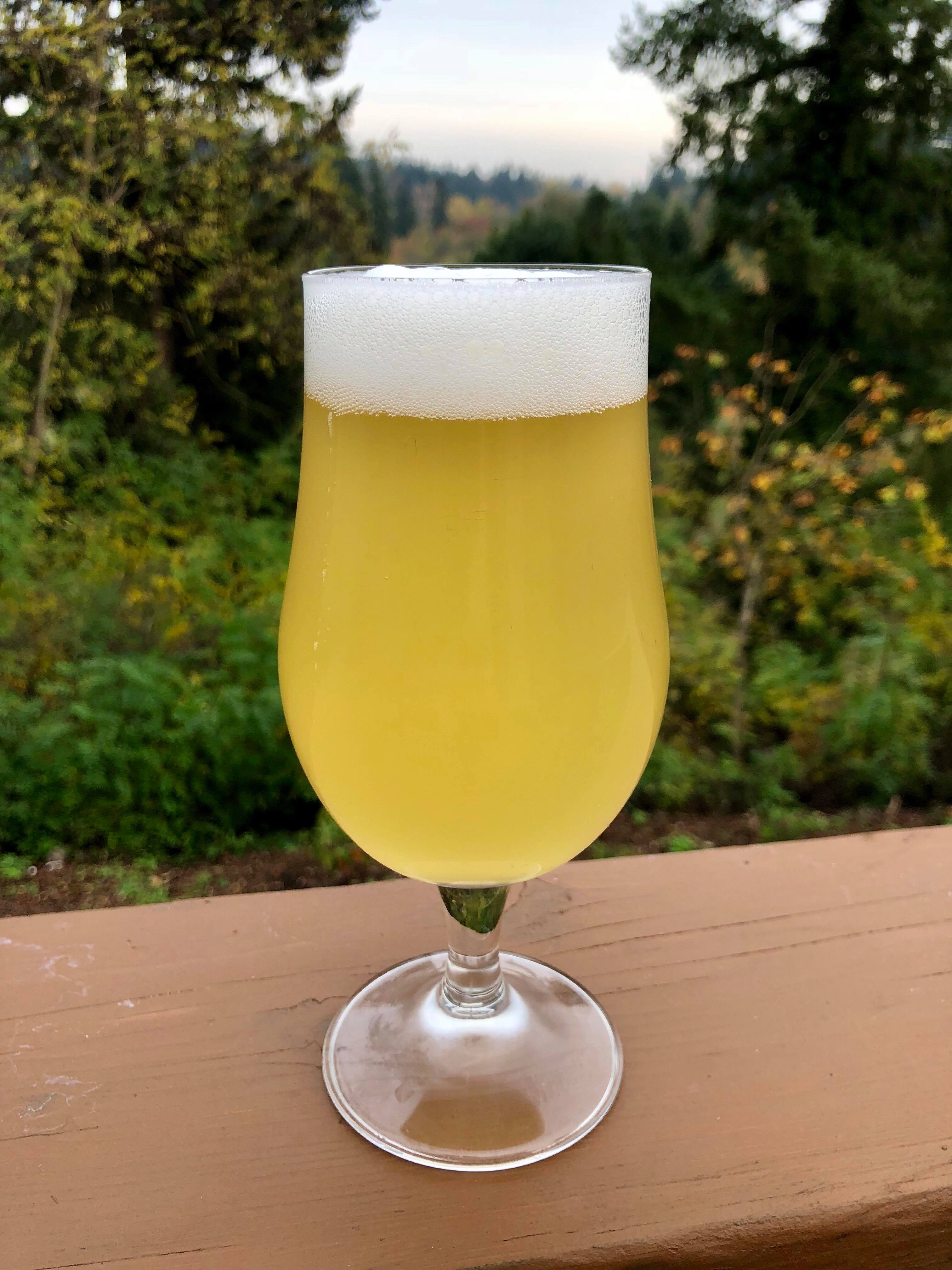radwizard
Well-Known Member
- Joined
- Oct 7, 2015
- Messages
- 729
- Reaction score
- 328
- Recipe Type
- All Grain
- Yeast
- Voss Kveik
- Yeast Starter
- no
- Batch Size (Gallons)
- 5.5
- Original Gravity
- 1.033
- Final Gravity
- 1.005
- Boiling Time (Minutes)
- 0
- IBU
- 5
- Color
- 3
- Primary Fermentation (# of Days & Temp)
- 10 days @ 75f
- Tasting Notes
- Light, smoky aroma. Slight tart bite up front, followed by bready-smoky. Really tasty beer.

20% Mecca Grade Lamonta Malt
20% Mecca Grade Pelton Malt
Heated up 6 gallons of brewing water.
Mashed in (Full Volume) and rested at 148 F for 60 Min
Mashed out and heated Wort to 185 for 15 Min
Chilled Rapidly to 70F
Removed 2 liters of chilled wort into starter Flask. Refrigerated.
Racked remaining wort to FV
Pitched 1 pack of Omega Voss Kveik Yeast, added o2, set temp to 75F
Once fermentation started, Added 2 GoodBelly Manjo Probiotic shots.
At 36 hrs of fermentation: Boiled 2 liters of saved wort for 15 minutes. Added Loral Hops (.5 oz) to achieve 5 IBUs. Chilled wort and added to FV.
Fermented quickly. After 10 days racked to Keg and Primed with sugar. After three weeks I chilled it and served.
Really cool beer. Super easy and fun to brew. Props to the HBTers that helped me out in my Lichtenhainer Thread a few months ago.
I left the ingredients in percent format because beers like this are often brewed on smaller scales initially, and I thought it would be easier to get started with. If anyone want any more details - let me know.






















































![Craft A Brew - Safale S-04 Dry Yeast - Fermentis - English Ale Dry Yeast - For English and American Ales and Hard Apple Ciders - Ingredients for Home Brewing - Beer Making Supplies - [1 Pack]](https://m.media-amazon.com/images/I/41fVGNh6JfL._SL500_.jpg)




